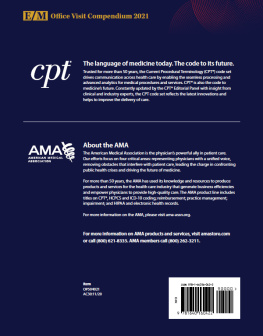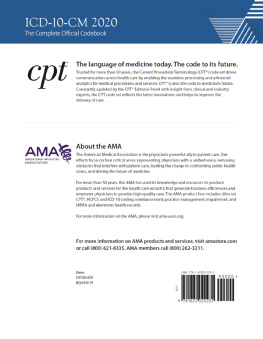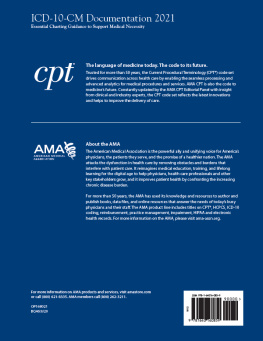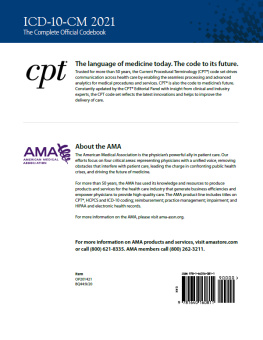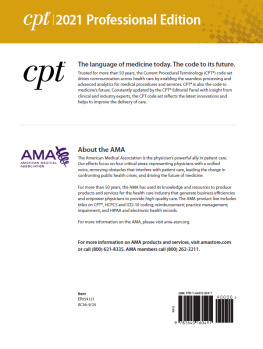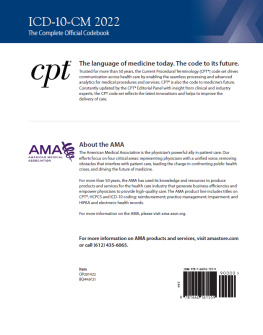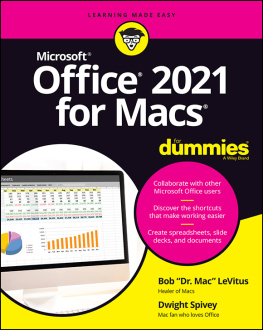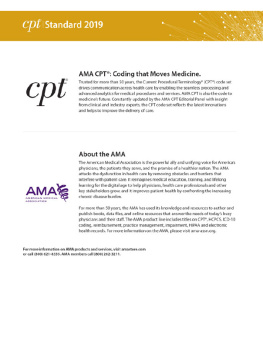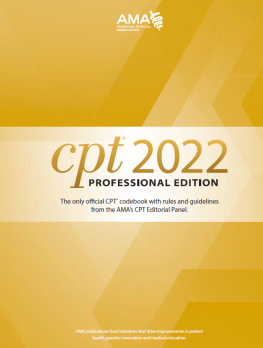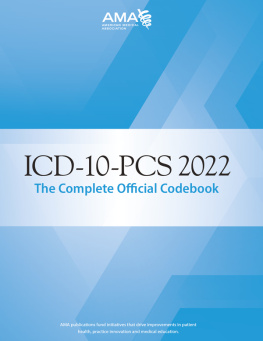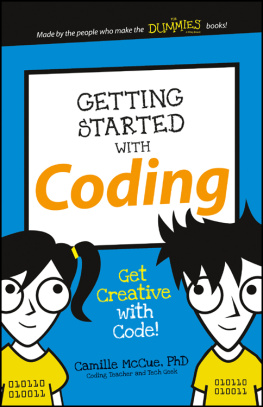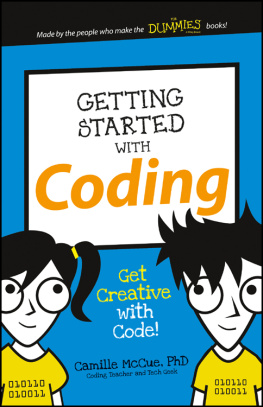Executive Vice President, Chief Executive Officer: James L. Madara, MD
Senior Vice President, Health Solutions: Laurie A.S. McGraw
Vice President, Coding and Reimbursement Policy and Strategy: Jay Ahlman
Director, CPT Coding and Regulatory Services: Zach Hochstetler
Director, CPT Content Management & Development: Leslie W. Prellwitz
Manager, CPT Content Management and Development: Karen E. OHara
CPT Senior Healthcare Coding Analyst: Janette Meggs
CPT Senior Healthcare Coding Analyst: Donna Tyler
Senior Healthcare Coding Analyst: Arletrice Watkins
CPT Healthcare Coding Analyst: Andrei Besleaga
CPT Healthcare Coding Analyst: Rejina Young
Vice President, Operations: Denise C. Foy
Publishing Operations Manager: Elizabeth Goodman Duke
Senior Developmental Editor: Lisa Chin-Johnson
Production Specialist: Mary Ann Albanese
Vice President, Sales: Lori Prestesater
Director, Channel Sales: Erin Kalitowski
Executive, Key Account Manager: Mark Daniels
Vice President, Product Management: Dave Sosnow
Director, CPT Operations & Infrastructure: Barbara Benstead
Product Manager, Print and Digital Products: Mark Ruthman
Marketing Manager: Vanessa Prieto
Printed in the United States of America. 20 21 22/ TB-WC / 9 8 7 6 5 4 3 2 1
ISBN: 978-1-64016-042-2
Current Procedural Terminology (CPT) is copyright 1966, 1970, 1973, 1977, 1981, 1983-2020 by the American Medical Association. All rights reserved.
No part of this publication may be reproduced, stored in a retrieval system, or transmitted, in any form or by any means electronic, mechanical, photocopying, recording, or otherwise, without the prior written permission of the publisher.
To purchase additional CPT products, contact the American Medical Association Customer Service at 800 621-8335 or visit the AMA|Store at amastore.com.
Refer to product number OP504021.
To request a license for distribution of products containing or reprinting CPT codes and/or guidelines, please see our website at www.ama-assn.org/go/cpt, or contact the American Medical Association CPT/DBP Intellectual Property Services, 330 North Wabash Avenue, Suite 39300, Chicago, IL 60611, 312 464-5022.
AC30:OP504021:11/20
Using The Book
The E/M Office Visit Compendium 2021 is intended as a supplement to the Current Procedural Terminology (CPT) 2021 codebook, providing helpful context and detailed explanations for the E/M office visit code revisions. The resources in this book will help coders, billers, and educators understand how to apply the revised office visit codes, the shorter prolonged services codes, and the revised criteria for leveling. For more information on related non-E/M codes, see the CPTProfessional 2021 codebook.
The resources in this book are designed with the intermediate user in mind. Those who are unfamiliar with the fundamentals of E/M coding, or CPT codes more generally, may find it useful to begin with Principles of CPTCoding, a comprehensive introduction to CPT billing and coding guidelines.
The revision of codes and coding guidelines for outpatient evaluation and management (E/M) services (99202-99215) in CPT 2021 represents the first major overhaul of E/M reporting in more than 25 years. These changes have the potential to give physicians and other qualified health care professionals (QHPs) more time to spend with patients by freeing them from significant administrative burden.
The revisions can be summarized as follows:
History and physical examination have been eliminated as elements for code selection.
History and physical examination should not determine the appropriate code level selected. While the physicians or other QHPs work in capturing the patients pertinent history and performing a relevant physical examination contributes to both the time and the medical decision making (MDM) involved in the encounter, these elements alone should not determine the appropriate code level.
Health care professionals should perform a medically appropriate history and/or examination.
The physician or other QHP is allowed to choose whether to base the documentation on MDM or on total time:
The MDM definitions have been revised and clarified.
The definition of time has been revised to specify ranges instead of a typical time and to represent total physician/QHP time on the date of service. The definition of time applies only when code selection is based primarily on time and not when it is based on MDM.
Code 99201 has been deleted.
Code 99201 has been deleted because codes 99201 and 99202 had straightforward MDM.
A shorter prolonged services code has been created.
A shorter prolonged services code (99417), which captures physician/QHP time in 15-minute increments, has been created.
This code should be reported only with codes 99205 and 99215 when time is the primary basis for code selection.
Keep in mind that these changes apply only to office and other outpatient services (99202-99215).
The first chapter provides a summary of the changes in the guideline structure to show readers the changes. In addition, a summary of the changes is available in to provide information on the changes in the guidelines to assist readers in understanding where sections of the the guidelines may have been relocated for the CPT 2021 code set.
The most effective way to use this book is to:
Review the CPT code descriptors and guidelines for 2021 E/M office visit codes.
Examine the new summary of changes table in this book.
The table illustrates the differences between the 2020 and 2021 E/M office or other outpatient codes.
Understanding and use of this table will assist in accurate E/M code selection.
Inspect the updated MDM table included in this book.
Review the updated and new definitions for clarity.
Familiarize yourself with this table to assist in appropriate 2021 E/M code selection.
Analyze the updates for reporting time under the 2021 guidelines.
In 2021, if code selection for office or other outpatient services is based on time, the time will be the total time on the date of the encounter as opposed to face-to-face time during the encounter.
Verify the guidelines for using the new prolonged services code before reporting.
Code 99417 may be reported only with codes 99205 and 99215 when the code selection is primarily based on time.
When the new prolonged services code is reported, the prolonged service time starts at the minimum total time for codes 99205 and 99215. As an example, for a new patient encounter (99205), 60 minutes of time are required to report the service. Do not report code 99417 until at least 15 minutes of time has been accumulated beyond the required 60 minutes (ie, 75 minutes) on the date of the encounter.
Assess the pending changes.
Evaluate your current E/M office visit usage and patterns.
Review internal systems or practices that will need to be revised to accommodate the deletion of code 99201.

